The 7 countries where the Aussie dollar goes further
As our currency gets smashed in Britain and the US, we show you where to holiday to get better value for money – and what to do when you get there.
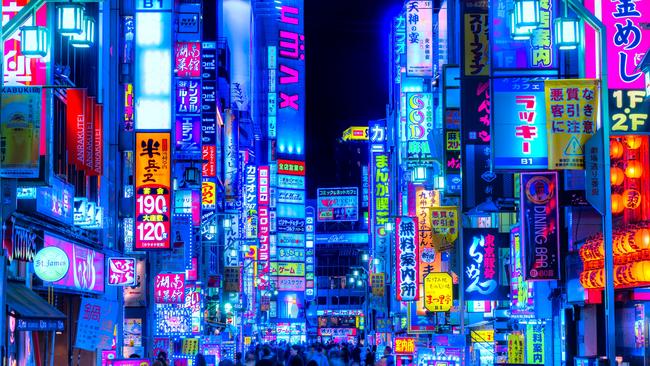
As travellers, we’re always seeking value for money, and when it comes to the Australian dollar, some destinations deliver more than others.
These countries have experienced a steady decline in the value of their currency over the past five years, which means you’re getting significantly more bang for your Aussie buck.
Sure, there may be issues of local inflation to take into consideration – Argentina being a sky-rocketing example – but the time is right to stay a while, dine in style, discover new experiences and engage in some retail therapy in the following fascinating destinations.
Japan, Tokyo
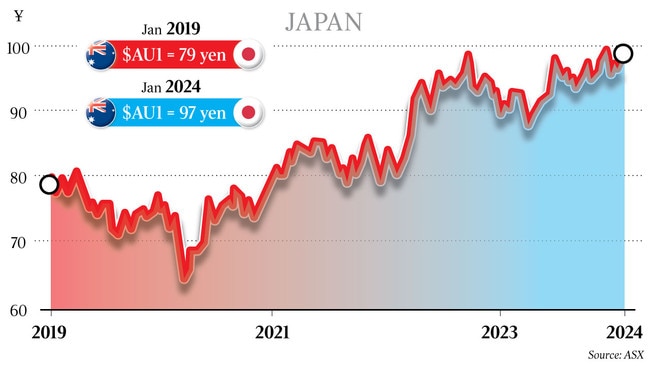
STAY: For all of the capital’s plush hotels, none occupies the sweet spot between contemporary luxury and traditional Japanese character quite like Hoshinoya Tokyo.
Steps from the Imperial Palace in the exclusive Otemachi district, it’s inspired by the traditional ryokan, which means you remove shoes at the door and pad along tatami mats in socks or slippers and (if you fancy) comfy yukata robes.
Dimly lit environs are simply but exquisitely adorned with fine craftsmanship, from shoji paper doors to checked ceiling panels.
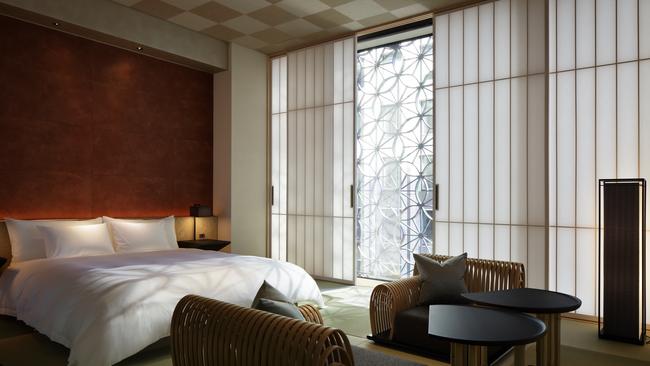
A top-floor hot spring, fed by waters drawn from 1500m below the ground and crowned with a skylight, provides an almost religious experience. Meanwhile, multi-course dinners in the subterranean restaurant’s private rooms show a mastery of colour, form and flavour from chef Ryosuke Oka.
Given the current favourable exchange rate, the $288 price tag to taste his culinary wizardry feels like a bargain; from 112,000 yen ($1155) a night.
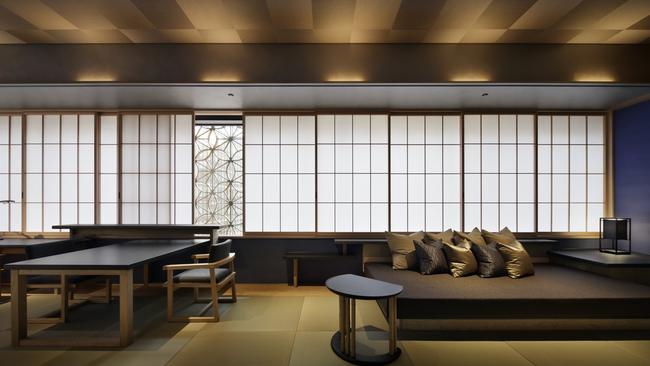
DINE: A multi-course kaiseki feast is the best way to capitalise on the weak yen. Along with Wagyu beef and high-end sushi, this intricate style of cooking tends to be the capital’s most expensive cuisine. The intimate Den in Shibuya is inspired by Japanese home cooking, but chef Zaiyu Hasegawa takes dishes to a sublime level with a constant rota of hyper-seasonal ingredients and an intimate atmosphere. Playful serves such as “Dentucky fried chicken” have earned the venue a two Michelin-star rating, as well as a Green Michelin star for its sustainable practices.
What many diners like best about a meal here is the unstuffy vibe; warm hosting from Zaiyu, his partner Emi and their resident pet chihuahua make this a fabulously unconventional breed of fine dining.
EXPERIENCE: Pottery-making is one of Japan’s most elite and historic art forms, stretching back centuries, possibly millennia. It’s not often you get the chance to see a master potter in action. Book a stay at Aman Tokyo and you’ll be able to meet, observe and work alongside celebrated contemporary potter Gentaro Yokoyama during a hands-on experience at his private studio.
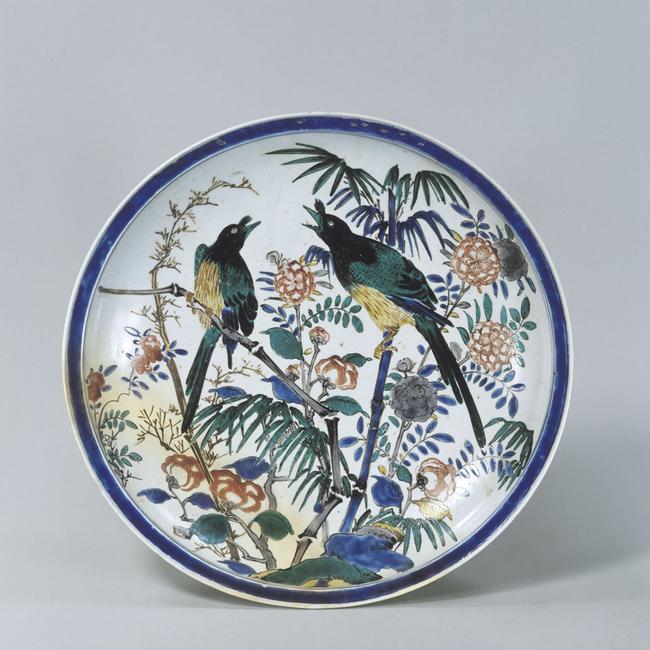
Under Yokoyama-san’s guidance, you can create your own pottery piece using a choice of moulds and colours; a one-of-a-kind souvenir to show off back home.
Every booking is tailored to guests’ wishes, so you could ask to pair the experience with stops at some of the city’s best craft shops – for example, Takumi in Ginza, with a visit to the Tokyo National Museum to ogle ceramics dating to the 12th century. Price on application.
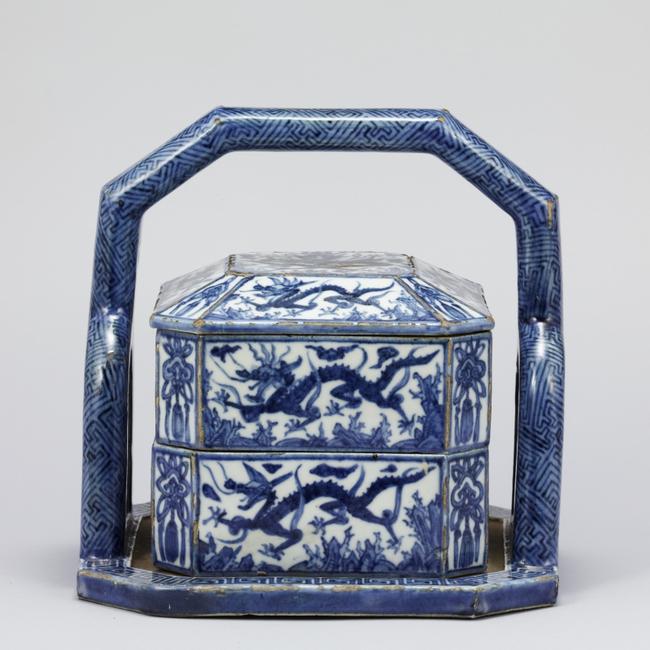
SHOP: Two sweet words for you: tax free. Visitors to Japan can save 10 per cent local sales tax on purchases of more than 5000 yen ($52) at most major shops in the capital, so long as they can show their passport at the point of purchase and plan to depart the country within six months.
This means a spree at fashionista favourite Shibuya PARCO department store – stuffed to the brim with trendsetting Japanese and international clothing brands, jewellery and cosmetics – can come at a seriously hefty discount.
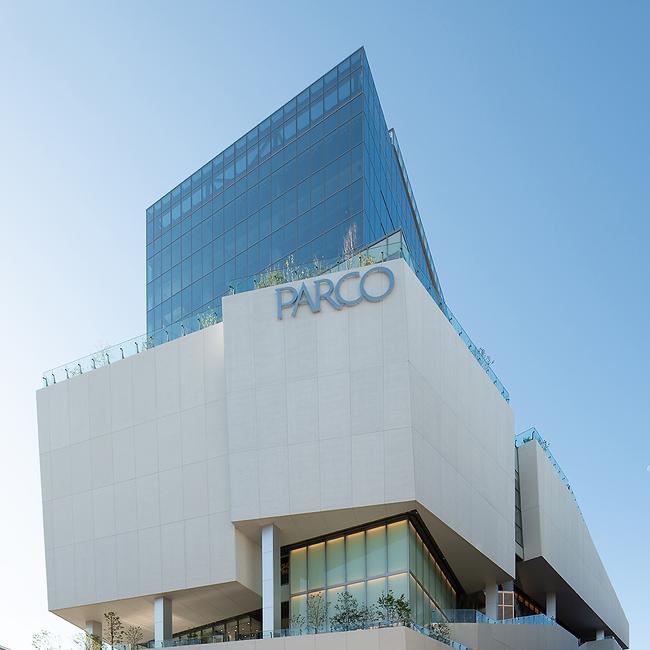
Inside, Yen Town Market hawks statement men’s tees, Beautiful People sells cashmere and leather coats, and Comme des Garcons has trainers with its signature graphic heart motif. Once you’ve picked your buys, refuel on Thai eats at Chompoo on the fourth floor.
Or if the day is turning to night, grab a seat at drag queen-inspired drinking hole Campy! Bar on the lower ground floor for a party-like atmosphere until 4am.
– Alicia Miller
Egypt – Cairo
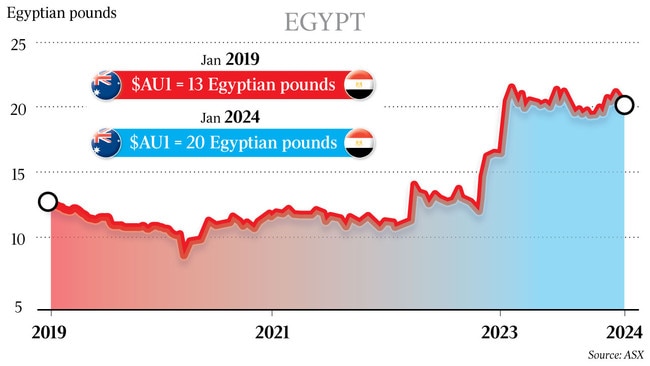
STAY: Egypt has been a dream travel destination ever since ancient Greeks started to explore its mysterious ruins 2500 years ago. Today, the allure of the Nile has hardly ebbed – and with the slide of the Egyptian pound, it has never been so affordable.
Start your trip with a bang by taking a taxi straight from Cairo airport to Mena House Hotel at the base of the Great Pyramids of Giza.
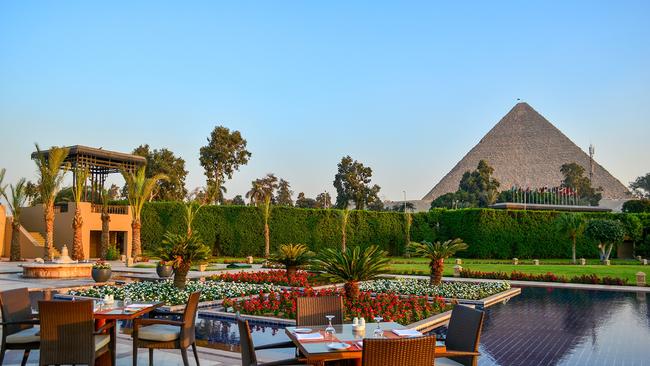
The hotel has been the luxury base camp for visits to the first wonder of the world since 1887, counting Agatha Christie among its guests. The best guestrooms have balconies with views filled by the golden triangle of the Great Pyramid of Khufu over swaying palms and orange-flowered flame trees, or poincianas.
The pyramids’ proximity means guests can get up early and visit long before tour buses arrive from downtown Cairo.
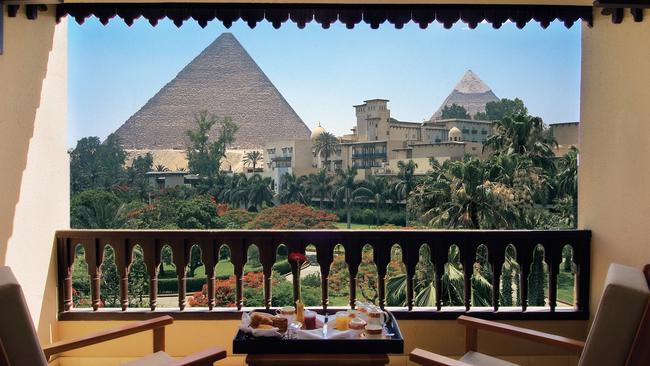
The colonial-era Mena House is now managed by Marriott International but has maintained its eccentric Egyptian character: open-air local weddings are held there most nights with a live electric folk-rock band, inspiring the waiters to giddily dance and sing; from $US473 ($720) a night, twin-share.
DINE: One of the finest spots in the country for Egyptian cuisine is Zitouni, a lavishly decorated restaurant in the Four Seasons Hotel Cairo at Nile Plaza, which sits so close to the legendary river you could toss a fishing line into the waters below.
Signature dishes include molokheya, a richly spiced stew served with seasoned fried chicken, pigeon stuffed with chicken livers, and fish tajine – or, if that is too rich, a delicious take on a local classic, Egyptian lentil soup.
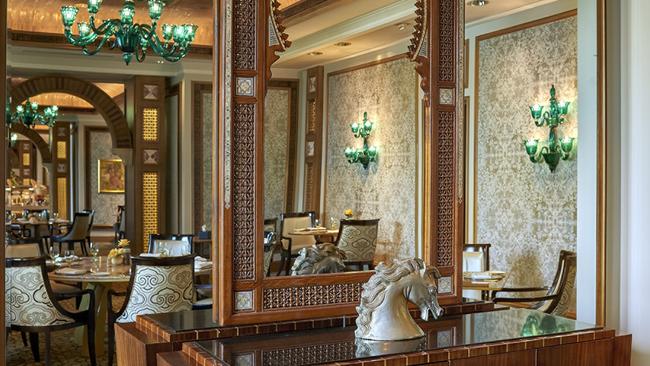
Dine at dusk, when you can watch the feluccas fluttering like feathers across the Nile. For the ultimate splurge, sign up for the two-day Taste of Egypt adventure.
Executive chef Emad Ebeid leads guests on tours of 140-year-old Makar Farms, where much of the restaurant’s organic produce is grown, and Egyptian winemaker Al Ahram Beverages; 47,216 pounds ($2320) for two people.
EXPERIENCE: A spate of opulent new museums has opened in Cairo recently, including the Museum of Egyptian Civilisation where the famous royal mummies are housed in subterranean splendour.
Archaeology lovers have been waiting desperately for the completion of the long-delayed Grand Egyptian Museum (GEM), a postmodern 490,000 sq m structure being built next to the pyramids at a cost of $US1bn – and today, the museum is offering limited private pre-opening tours for about $US135, allowing a glimpse of its 100,000 relics, which include such wonders as the repaired Colossus of Ramses II (the Pharaoh of the Bible), the Obelisk of Tannis and the “solar boats” buried for the use of kings in the afterlife. It’s worth every penny. When the museum officially opens later this year, about 8 million visitors are expected annually.
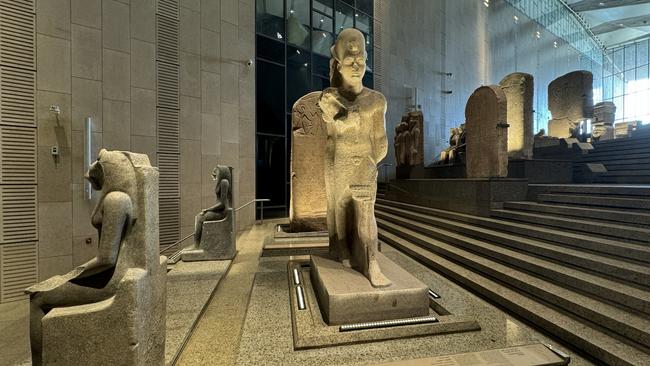
SHOP: Old Cairo has miles of market alleyways filled with dirt-cheap handicrafts. For a high-end experience, head to Alchemy Design Studo (15A, Road 6), which, as one of its artist explains to me, “brings ancient Egyptian concepts and traditional craftsmanship into contemporary design”.
Its sleek showroom is housed in the former loft of founder Karim Mekhtigian, and is crowded with elegant handmade creations riffing on ancient Egyptian art.
Expect plates carved from translucent alabaster, a polished bronze vase that echoes the shape of canopic vases (used to house the organs of mummified pharaohs) and abstract statuettes of the hippopotamus goddess Tarawet.
The pieces are made by Cairo artisans in small traditional workshops, but aimed at the future. “In Egypt, people want you to be nostalgic all the time,” Mekhtigian tells me.
“The talk is all about the pyramids and replicas of Pharaonic artworks. We don’t want to be nostalgic. Egypt is a living culture. Why can’t we have our own icons today?” Visit by appointment via info@alchemy01.com
-Tony Perrottet
Argentina – Buenos Aires
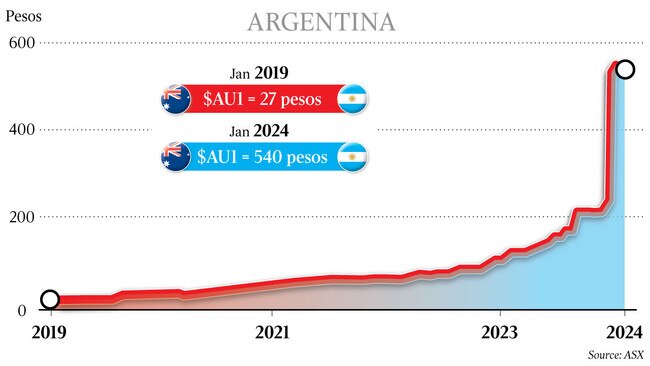
STAY:Legado Mitico in classy Palermo Viejo, off a cobblestoned street within instant access to the precinct’s fashionable Soho district, is a privately run heritage townhouse of immense charm and courtesy. Its 11 ensuite chambers are individually decorated and named for legendary Argentinians, including Eva Peron and Che Guevera.
Last visit, I stayed chez Luis Borges in the El Escritor room dedicated to the author, with copies of his books by my bed and framed photographs of this master of magic realism on display.
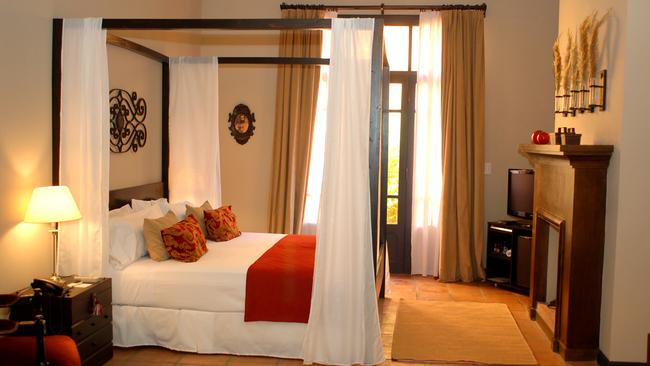
There’s no in-house restaurant but breakfast is served in the library or a small courtyard and young staff act as concierges, full of suggestions and secret tips, especially about nearby homewares stores, galleries, and wonderful finds such as the eclectic and atmospheric Paul French cafe cum atelier and garden shop.
There are luxe hotels with more facilities and falderals in the capital but few deliver such a personalised welcome; from $US330 ($500) a night, twin-share.
DINE: In a land of abundant meat, an upmarket steakhouse makes sense. Fervor in Recoleta (a district that feels transplanted from Paris) is a long-time favourite, with checkerboard floors, perfectly starched tablecloths, red velvet banquettes and chandeliers. Whether deliberate or not, the vibe is very 1920s, with waiters in long white aprons, waistcoats and bow ties. The voyeuristic should book a ringside mezzanine table to look down on the “scene” below, including diners dropping by at the “early” hour of 10pm.
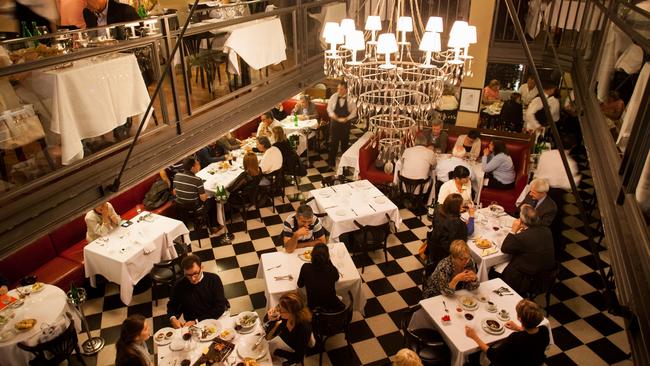
Aside from hefty steaks, seafood dishes are offered, including sea bass, squid, scallops and shrimps. A half-portion was offered to me when I baulked at the size of the serve at a neighbouring table, and plates of dried chillis and an enormous bread basket arrives unsummoned with all orders.
Given that even members of Argentinian high society must be doing it tough during the present recession, it’s likely Fervor has lowered its prices (or abbreviated those gigantic servings) but you still might, as I did, spy a member of the national polo team or two tucking in.
EXPERIENCE: Consider a personalised guided tour of the 5.5ha La Recoleta Cemetery, where almost 5000 ornate mausoleums of the rich and fabled are festooned with sorrowing angels and stylised statues of the deceased.
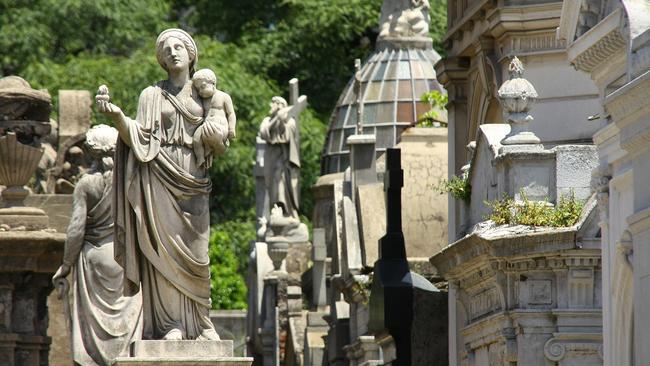
Admission is free but a knowledgeable guide will disclose the back stories of the best-known “inhabitants” (who may or may not have been buried alive, for example) and, crucially, ensure you don’t get lost amid labyrinthine pathways and sudden turns worthy of a Borges novel. Ninety-four of these above-ground vaults are listed as national historical monuments.
Eva Peron is buried here, in a family vault under her Duarte maiden name, and so too are Nobel prize winners, military generals and literary figures.
The Tours by Locals company has English-speaking specialists who’ll design a themed tour of Buenos Aires according to travellers’ interests and, if La Recoleta Cemetery is on the agenda, will no doubt disclose grisly gossip concerning the state of Evita’s embalmed corpse.
SHOP:San Telmo indoor market is in one of the capital’s oldest barrio (neighbourhoods). In business since 1897, and surrounded by well-preserved colonial buildings and alleyways lined with antiques shops, the market is a perfect one-stop option for craftwork and souvenirs.
But for that signature leather purchase, head straight to Rossi & Caruso (the self-billed Hermes of Argentina, established in 1868); its flagship store in Recoleta (Posadas St) is as swish as any boutique in a top Parisian arrondissement.
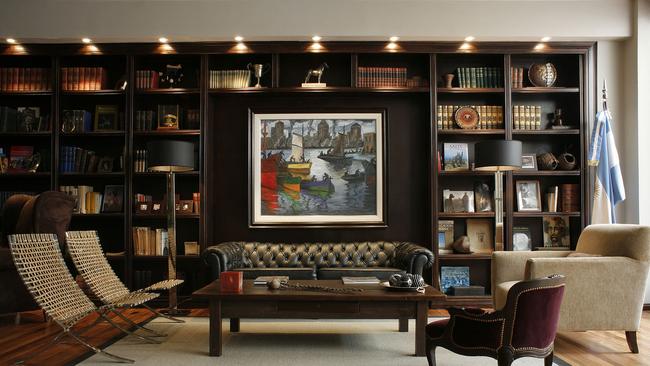
While cowhide handbags (from about $US140) in classic styles are the lure, there’s a tempting array of shoes, belts, suitcases, overnight carriers and even saddles (polo, anyone?). Also try Sofia de Grecia for shoes (Juncal St) and the neighbouring boutiques of young local designers. Reading material? El Ateneo Grand Splendid, housed in an immaculately repurposed vintage theatre, is routinely named as the world’s most beautiful bookstore.
—Susan Kurosawa
South Africa – Cape Town
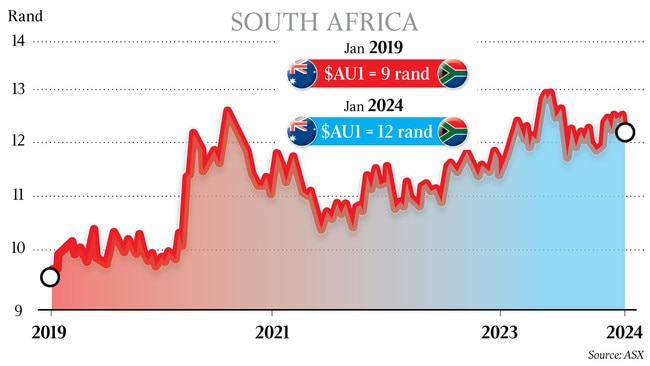
STAY: The rules inscribed on the salon walls exemplify the ethos of Dorp Hotel, which roosts like a somnolent peacock in the shadow of Signal Hill: “D for Decency, O for Originality, R for Respect and P for Psycho”.
Dorp (which means “town”) is a rousing blend of these edicts, mirroring both the architectural contours of rainbow-hued Bo-Kaap, nestled on the slope below, and the footprint of the old Noon Gun Tea Room, upon which it’s constructed.
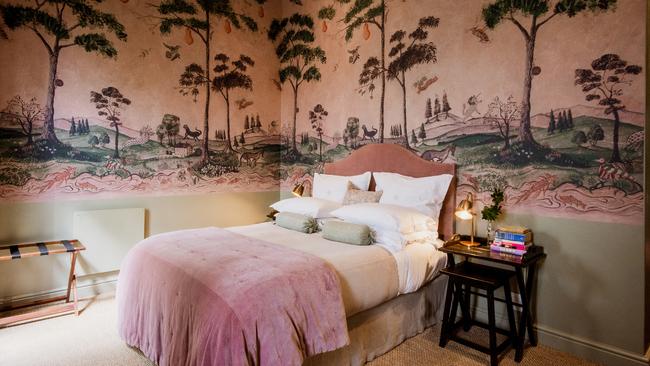
The decadent suites and leafy, book-lined salon suggest more artists’ bolthole than customary hotel; this is a grown-up retreat – under-14s not allowed – where guests wake up to views of Table Mountain and glimpses of Table Bay, and fall asleep above a charmingly spangled city (the CBD is a few minutes’ drive away).
Stretch the Aussie dollar further still with a garden-facing suite or a self-catering apartment in Onderdorp (“under the town”), a wing on the lower block; from about 4140 rand ($340) a night, twin-share (two-night minimum).
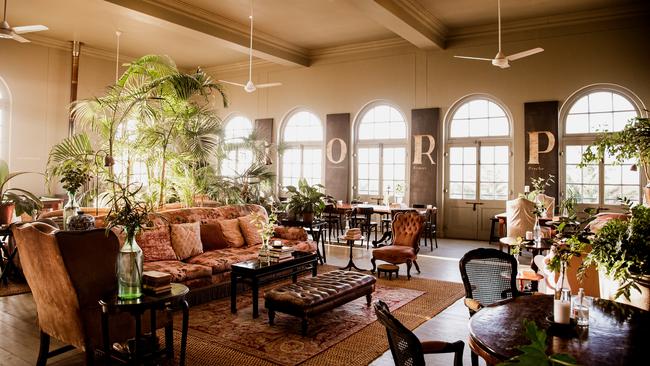
DINE: At Salsify you can consume “The Ugly Bits Of Lamb” while glimpsing the beautiful bits of Cape Town, including the chiselled face of Lion’s Head and the shimmering sweep of Camps Bay.
But don’t let the menu’s naming convention underestimate the superiority of executive chef Ryan Cole’s cuisine: that “ugly” lamb is world-class Karoo ribs served with amadombolo (African dumplings) seasoned with khakibos (an indigenous plant).
For the price of a bottle or two of good Australian wine, you’ll lunch on six courses including kreef (rock lobster) served with samp mielies (pounded corn).
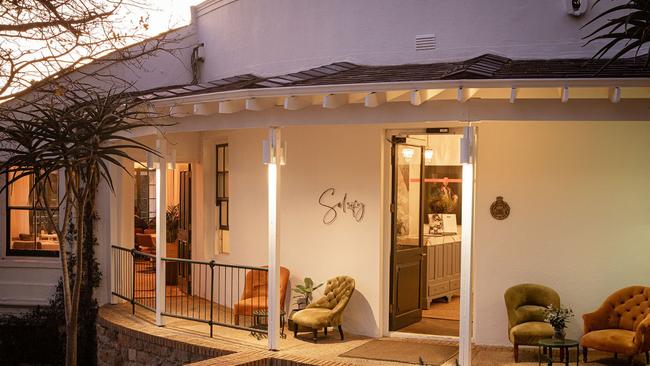
The 10-course dinner menu leads tastebuds on a salubrious journey, from Jacobsbaai on the Cape’s west coast, where some of the world’s finest abalone is found, to the kingdom of Lesotho, famed for its trout. Diners sup on history, too:
Salsify is in the historic Roundhouse, which was used as a hunting lodge by 19th-century Cape Colony governor Lord Charles Somerset. From 1785 rand ($146) a person; add 1450 rand for wine pairing.
EXPERIENCE: Do you collect art and enjoy visiting creatives in their studios? Which artistic movements inspire you? What is your favourite artwork of all time?
The answers to these and other arty questions will determine the route you take during a bespoke art discovery outing with Jarat Tours.
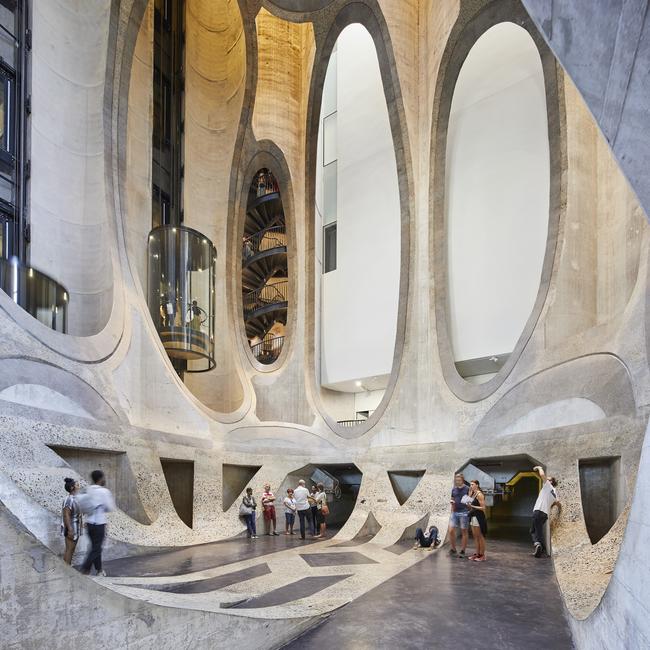
The company’s pre-departure interrogation is an efficiency strategy for time-pressed travellers; you could spend a month exploring the city’s vast arts scene and still not scratch its surface. Beyond the extraordinary repository of the continent’s largest collection of African art, Zeitz MOCAA, you might discover emerging artists working at the Cape’s oldest visual arts society, housed in a building constructed in 1702; street art enlivening the heritage facades in Woodstock; city galleries filled with sculptures, ceramics and conceptual works; and NGOs working with creatives from previously disadvantaged backgrounds. Art tours from about $550 for two.
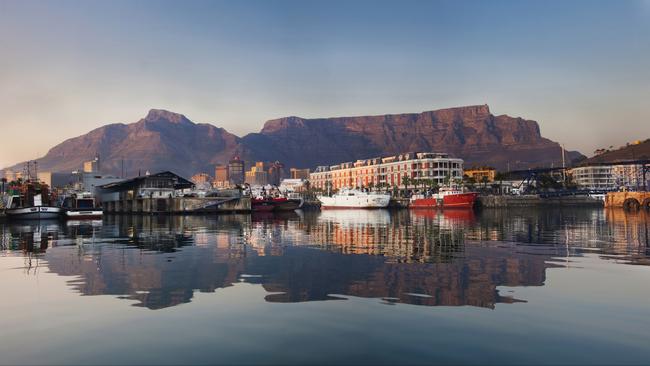
SHOP: African vigour positively bursts from the doors of Maxhosa Africa at the V & A Waterfront, proclaimed one of Cape Town’s “cool spaces” by South African decor, design and architecture magazine Visi. Equal parts art gallery, clothing boutique and decor emporium, Maxhosa distils founder Laduma Ngxokolo’s Xhosa heritage in its contemporary creations: velvet shorts embellished with chevrons and zigzags (8300 rand); skirts scalloped in riotous colours (13,800 rand); umbrellas unfurling with African motifs (1800 rand); handwoven mohair rugs that transform floors into works of art (from about 25,000 rand).
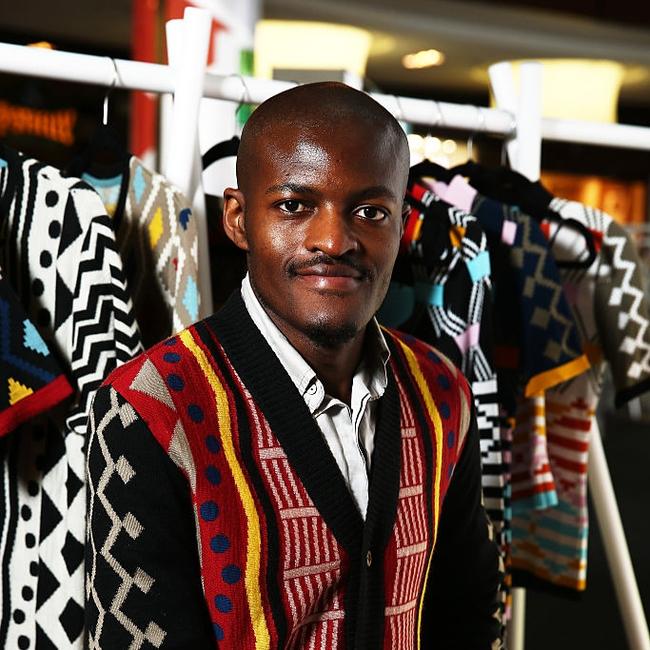
The shop’s focal point is a work by artist Nelson Makamo reproduced in mohair in collaboration with a weaver from Lesotho. Ngxokolo, a knitwear designer, founded Maxhosa in 2010. His collections – shown at London and New York fashion weeks – have achieved his desire of communicating the Xhosa language and culture in wearable form.
—Catherine Marshall
Norway – Oslo
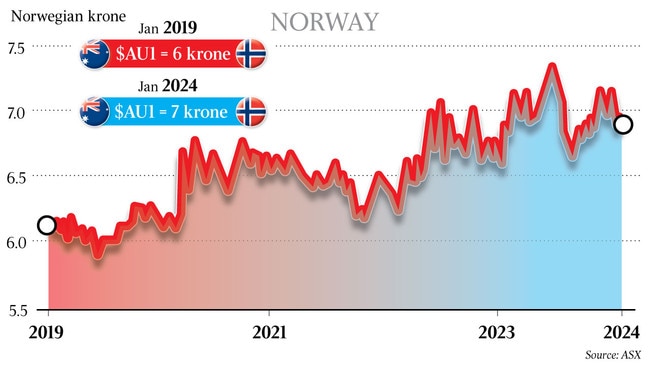
STAY: While Oslo is regularly ranked one of the most expensive cities on cost-of-living criteria, it remains excellent value for travellers.
It’s a question, as always, of what you get for your Aussie dollars. In Oslo’s case, the answer is a sparkling fjord-side city of stunning art collections, with Edvard Munch being the star; a distinctive culinary culture focused on Nordic seafood; and an accessible gateway to Arctic cruises.
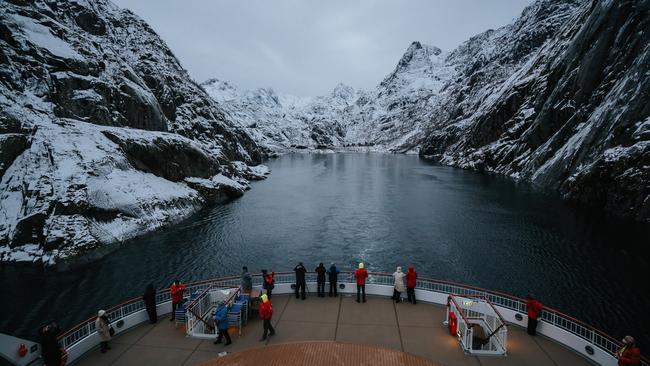
The centrally located Hotel Bristol is international but also a much-loved Oslo institution. A renovation in 2019 – on all 251 guestrooms and public spaces – has added comfort to its 1920s charm. Locals flock here for the British-style afternoon tea in the grand library bar. Huge breakfasts are to die for (or possibly from) and Norwegian seafood is prepared every which way.
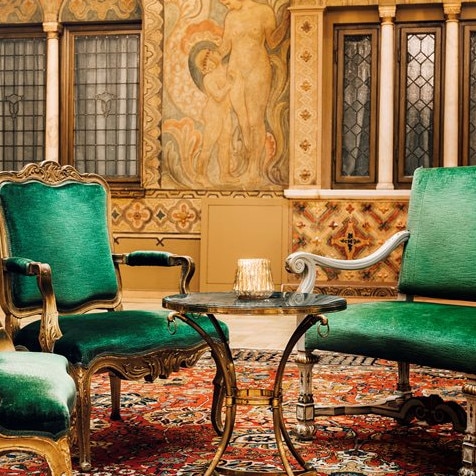
In the evenings there’s a grill bar offering wild turbot alongside halibut ceviche and scallops, and the Bristol Gin Bar, with a focus on Scandi liqueur, will help whet the appetite beforehand. From $260 a night, twin-share, in low season.
DINE: The waterfront precincts of Aker Brygge and Tjuvholmen teem with dining options, from Ling Ling Oslo, which is Cantonese fare with Nordic produce, to Venti Venti, an Italian-inspired restaurant beneath the arches of the Astrup Fearnley contemporary art museum. For sweeping harbour and fjord views, head to Bistro Tolvte in the striking Munch Museum. Classics include moules frites ($70) and entrecote ($78) alongside Nordic specialities such as reindeer fillet ($104). Oysters are $12 a pop.
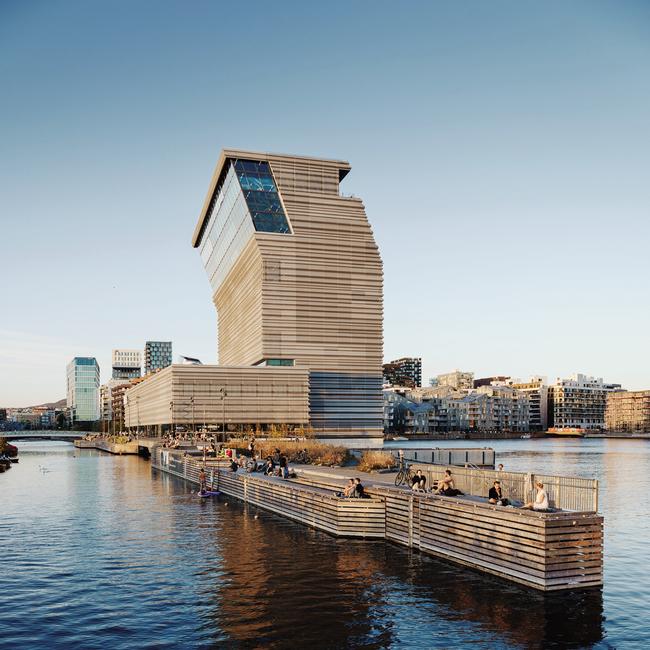
EXPERIENCE: The Munch Museum is a 60m-high art tower with its angsty crowd-pleaser, The Scream, a must for any visit.
There are more Munch paintings at the National Museum of Art, Architecture and Design, along with diverse Scandinavian and European artworks.
The stirring Norwegian landscapes serve as a prep for Norway’s greatest adventure: the Coastal Express heading into the high Arctic with cruise line Hurtigruten. Each day its ships collect and deliver cargo, as well as local and international travellers, to ports from Bergen in the south to Kirkenes in the north.
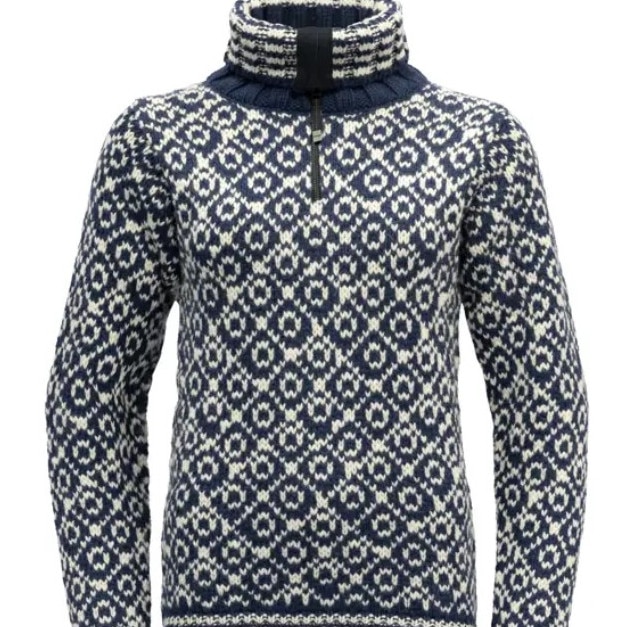
SHOP: Indulge in some serious winter-weather shopping at Devold, Norway’s traditional knitwear company. The brand originated in the mid-19th century with handmade, indestructible knits in traditional patterns for fisherfolk.
It continues to produce chunky Nordic knitwear but has also innovated with hi-tech lightweight woollen fabrics. Expect to pay about $300 for a traditional sweater, and that’s before you claim tax back at the airport. Other Nordic outdoor brands worth checking are Norrona, Bergans, Viking (for footwear) and the ubiquitous Helly Hansen.
—Luke Slattery
Turkey
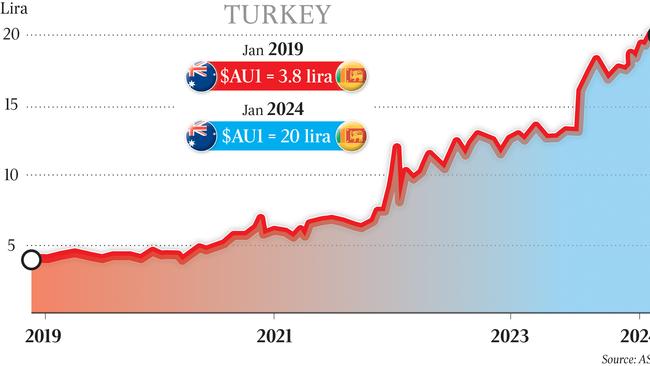
Back in 2019, one Aussie dollar would buy just under four Turkish lira. These days, it’s close to 20 per dollar, giving Istanbul an affordable exotic allure for Australian travellers.
Those who favour big-name luxe hotels are spoiled for choice, with a new Peninsula hotel (opened last year) in the trendy Karakoy district joining the Mandarin Oriental Bosphorus (opened mid 2021) and recently revamped Four Seasons Sultanahmet.
Visitors seeking to put a further dent in their holiday budget can head to Galataport, a mega waterfront development where shopping, dining, art and culture meet at the city’s new cruise ship terminal.
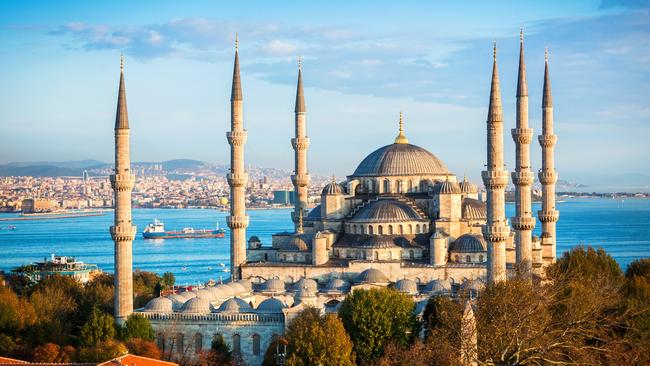
Work up an appetite perusing the Istanbul Museum of Modern Art, the innovative fashions of local star Arzu Kaprol or coveted leather goods at Adamo before sampling sweet delicacies at patisserie Baylan, an Istanbul favourite since the 1920s. For a more conventional Turkish retail experience, the 4000 shops of the Grand Bazaar, one of the oldest covered markets in the world, beckon. Amid the maze of laneways you can haggle over kilim carpets, gold jewellery and glowing glass lanterns.
The Cukurcuma quarter is a treasure trove of antiques, with acclaimed atelier A La Turca an essential stop for restored furniture, textiles, art and ceramics. Don’t miss, too, novelist Orhan Pamuk’s Museum of Innocence.
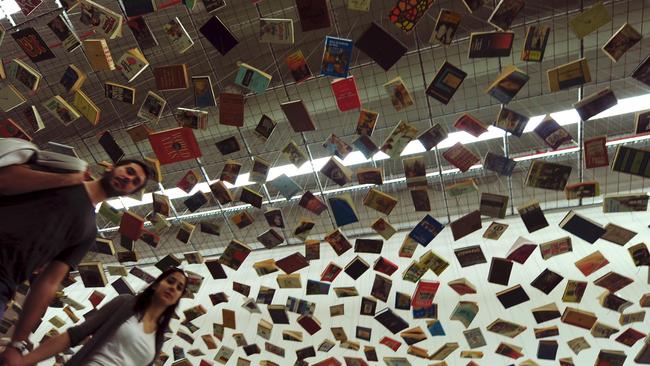
The Michelin crew has highlighted a crop of eateries that serve excellent cuisine with eye-popping Bosphorus views. Among them is one-starred Mikla, voted one of the world’s 50 best restaurants, which has a tasting menu (5600 lira/$326) that gets rave reviews.
Also highly recommended is Murver on the top floor of the Novotel, where a six-course meal includes intriguing dishes such as octopus in ash, and sour cherry and purple basil ice cream (3000 lira a person).
Sri Lanka
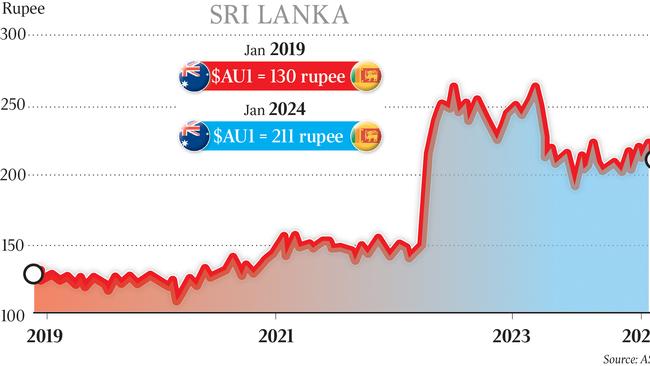
Sri Lanka is another country with a currency that favours the Australian holidaymaker. While our dollar would once buy about 130 rupees, it is now worth more than 210.
Shopping is an obvious lure.
The entrepreneurial Dominic Sansoni runs Barefoot Ceylon, a fair-trade company with shops in Colombo and the fort city of Galle selling village-made textiles and products such as sarongs and soft toys. Quality is high and prices relatively low.
If in the capital, drop in for tea and light meals at Barefoot Garden Cafe on Galle Rd. Also in Colombo, the Barefoot Gallery shows original contemporary artworks from established and emerging artists, so there’s investment potential for collectors.
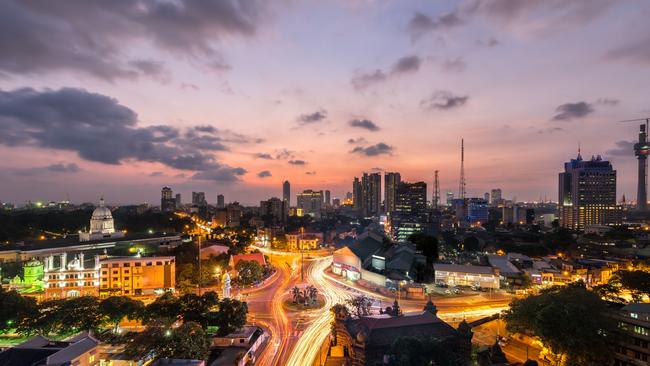
Rental villas, often by the sea or in tea plantation settings, are truly affordable, with staff on call and often fascinating pedigrees, such as Villa Bentota on the southwest coast, designed by Geoffery Bawa, acknowledged as the “father” of tropical modernism architecture.
Sri Lanka has also emerged as a wildlife destination. Resplendent Ceylon’s Wild Coast Tented Lodge, on the edge of Yala National Park, offers safari drives to spot the likes of leopards; there are creature comforts galore in cocooning tents, many with plunge pools.
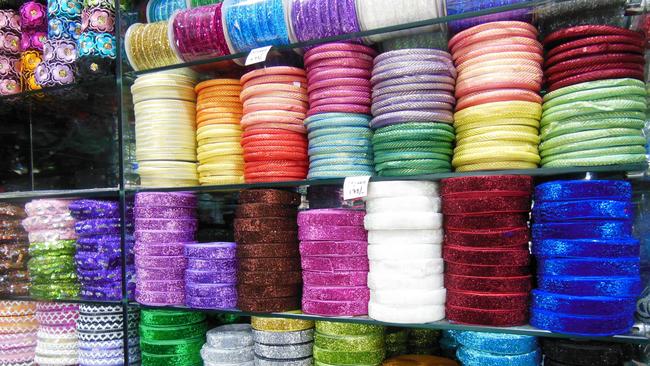
For a spot of heritage and history, Colombo’s Galle Face Hotel is the acknowledged duchess, right by the waterfront. It’s had matronly nips and tucks since opening in 1864 but retains an immutable sense of grandeur. Sit on the columned veranda and make like it’s Mayfair with a spiffing afternoon tea.
There’s a three-tiered stand option at Rs3900 ($18.50) or a more substantial high tea buffet ($20.80). Both are bargain sums in a country doing it tough but determined to welcome visitors with true hospitality.
—Penny Hunter and Susan Kurosawa


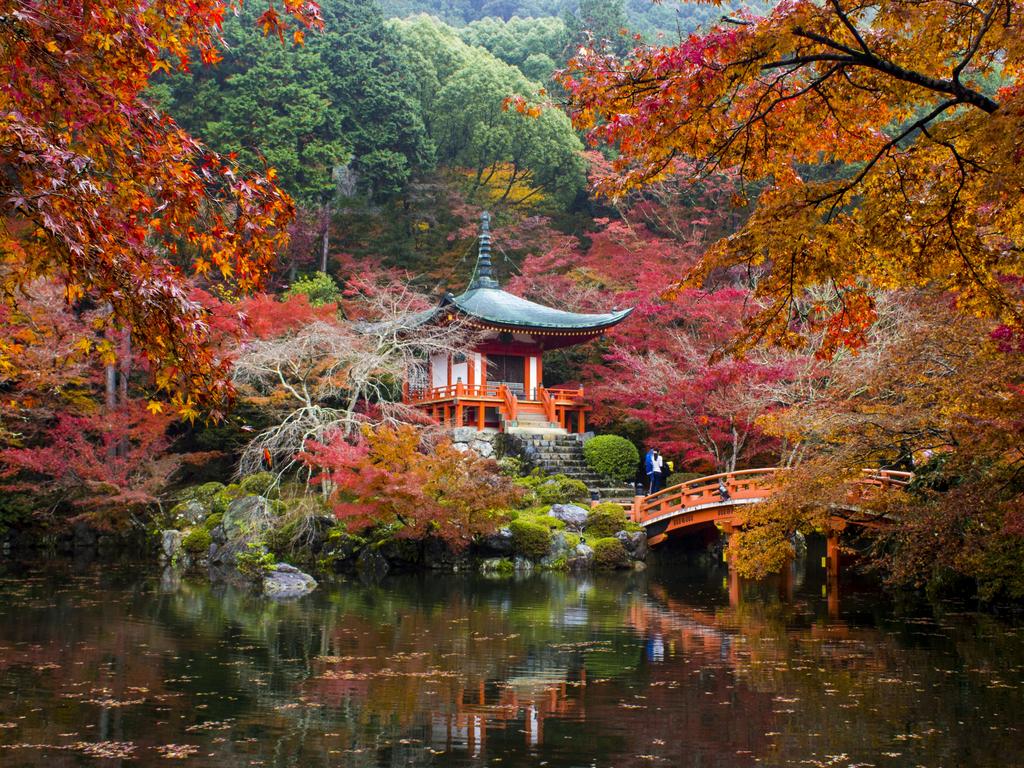
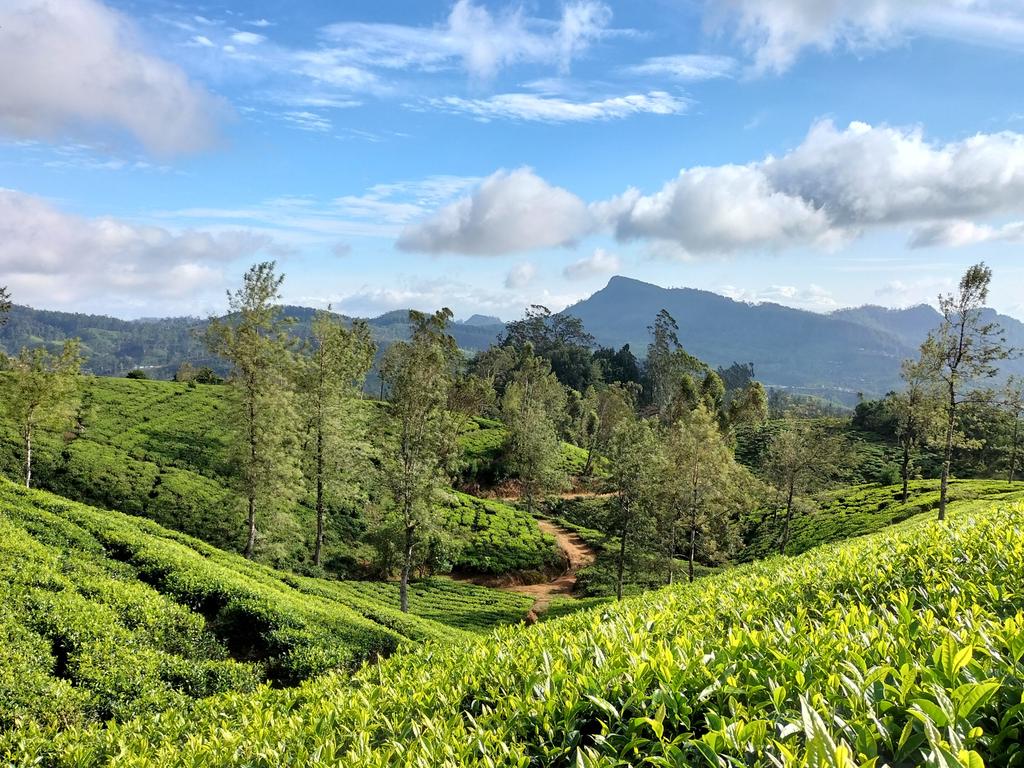
To join the conversation, please log in. Don't have an account? Register
Join the conversation, you are commenting as Logout